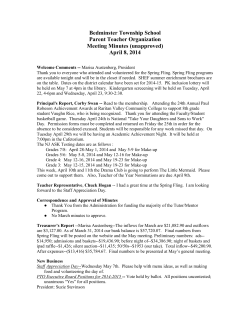
interview: joern kluge, ceo mt.derm gmbh (germany)
INTERVIEW: JOERN KLUGE, CEO MT.DERM GMBH (GERMANY) JOERN KLUGE, CEO MT.DERM GMBH (GERMANY) For how many brands in the world do you provide your products (except AMIEA)? It is true that we supply many different products as private label through our partners. We do keep the names and numbers for ourselves but we can confirm that as of today we are providing products for more than 40 countries. Which of your business directions do you consider the most promising and fast growing? There are several market segments that we have invested into. This relates to the permanent make-up market, the tattoo industry, the medical market, drug delivery market as well as permanent make-up franchise systems in Asia. All of these markets have their fascinations and promises. What market in your opinion is the most promising from the business point of view – tattoo or micropigmentation? These markets are very different. Both have their own advantages and disadvantages. The micropigmentation market is a small niche market and we have obtained our market leadership through many years of research & development of products as well as knowledge about training. The tattoo market is much larger. We have been in the body tattoo market for only five years. It is our objective to become the #1 com- PERMANENT MAKE-UP #1 pany in this field. In both markets – however – market leadership can only be obtained through the best products which meet the requirements of the users to the full extent. Relating to quality, precision and longevity of the products. Why do you think that the micropigmentation market is smaller than the tattoo market? Permanent make-up for eyebrows and lips may be required for any woman, whereas a tattoo is not at all necessary. | WWW.PERMANENT-MAGAZINE.COM I agree that the micropigmentation market still has a huge potential. Micropigmentation is for everyone. However, the numbers show us, that the tattoo market today is larger. In Western Europe 12% of the population have tattoos. In the US it is 15%. In some age groups even up to 30%. Including men and women. While the very large majority for micropigmentation procedures is women. And yet do you suppose that in the near future, say 10 years, 113 INTERVIEW | JOERN KLUGE the micropigmentation market will exceed the tattoo market? This will depend on the consumer and the micropigmenation artists. There is still a lot of bad work done which is negatively influencing the market size. One day training classes and cheap and unsafe products are limiting the growth of the market. Artists need a good training and precise and safe products. Are you dealing with numerous counterfeits of your products all around the world? In what way? Indeed, in some parts of the world counterfeit products have appeared. Especially through online shops technicians are sometimes deceived by fraudulent offers. And also we have seen some small companies which started with counterfeit products. Technicians have to know that the counterfeit products lack the precision and quality. On the needles cartridges, there is an additional risk. The counterfeit needle cartridges do not have a membrane to protect the handpiece from the backflow of contaminated liquids. Our cartridges prevent cross contamination and, for example, the transmission of Hepatitis C which is one of the major contamination risks. How many owners there are for MT.Derm company? I have 4 partners in the company. What were you in before you founded the company in 1998? I was a student at university. The opportunity to found MT.DERM was introduced to me by my father who owns a needle manufacturing company. Your father runs a micropigmentation needle manufacturing company? My father is founder and CEO of Feuerstein GmbH. Feuerstein 114 WWW.PERMANENT-MAGAZINE.COM | PERMANENT MAKE-UP #1 JOERN KLUGE | INTERVIEW manufactures a large variety of OEM needles especially for surgery and sutures. Some of them for MT.DERM. So our family has a long history and experience in needles. This fact has certainly helped me in the success of the company. Do you produce micropigmentation products for other brands? If I want to make pigments under my brand, will you help me with it? What are the requirements for such customers? In general, yes, we are a private label manufacturer. However, we are limiting ourselves since we have already achieved a considerable market share. We decide upon the customer’s strategy, the customer’s country and our strategy. What is your family doing? Your wife, children? Do they also work in MT.Derm? Can you say it’s a family business? It is a family business! I’m fully dedicated to MT.DERM. This involves a lot of focus and a lot of time. Thus I rely on my wife to keep my back free at home. My two kids are eight and four years old. I enjoy helping them to be successful in their lives and – of course – I’m having a lot of fun with them. What are the requirements for your distributors in different countries? What is the most important? There are different requirements for the different brands. Micropigmentation is different from Tattooing and is different from the Medical Market. For Micropigmentation we believe that a training academy to train beginners and advanced classes is of highest importance. Do you use some know-how developed at MTDerm in your micropigmentation products (equipment, pigments, needles, etc.)? PERMANENT MAKE-UP #1 | WWW.PERMANENT-MAGAZINE.COM 115 INTERVIEW We have filed more than 20 inventions as patents. Many of them are granted and have international filings. All of our devices and disposables have some patents which cover them. Can you name top 5 countries where the micropigmentation and tattoo market is developing at the highest pace? The fastest growth is certainly in Asian countries. However, these markets are not easy to reach for us. Training is the most essential as already discussed, and there are cultural barriers which require us to change the training and marketing concept completely. What makes the access to the Asian market difficult? skin and anatomy of the face. Our trainers need to adapt to these requirements, which takes a lot of experience and time. You have very few representatives in the USA. Why? In the US we had licensed our two basic patents in 2002 to our representative. Thus only this representative is selling there. The representative has partnered with us in defending the patents. We just finished a case with the international trade commission where we could prevent counterfeit products from entering into the US. Questions on pigments for micropigmentation. How different is the quality of pigments at different price levels? What makes this difference? Let’s say, there are pigments for $20-$30 per 1 Oz and pigments $100-$150 per 1 Oz. Does the higher price always guarantee the highest quality of the pigment? There are many reasons. Just to name a few: Micropigmentation is done – with the exception of very few stars – by low income staff. This reduces the prices for the services and in consequence the willingness to buy high end equipment. It will take time A high price of a bottle is not for quality awareness to build. Another topic is the different ethnic necessarily an indication for 116 | JOERN KLUGE quality. But the other way around it is true: If the pigment color price is very low, you can assume a lower quality. A responsible manufacturer will – for example – only use ingredients of pharmaceutical quality. (EDITORIAL STAFF OPINION: Just a note of fact: In the United States, on the USDA Food, Pharmaceutical, and Cosmetics Approved Color Additives Chart there is NO difference between the Pharmaceutical and Cosmetic grades with the exception of an acid violet and a couple of Pythallo Blues). Also, it is a ‘safety plus’ if a manufacturer is certified according to ISO 9001 and 13485 (medical standard). Additionally good manufacturers invest into product development and significant testing before market release. These safety aspects cannot be achieved with the lowest cost. WWW.PERMANENT-MAGAZINE.COM Exclusively for PERMANENT MAKE-UP MAGAZINE | PERMANENT MAKE-UP #1
© Copyright 2025












